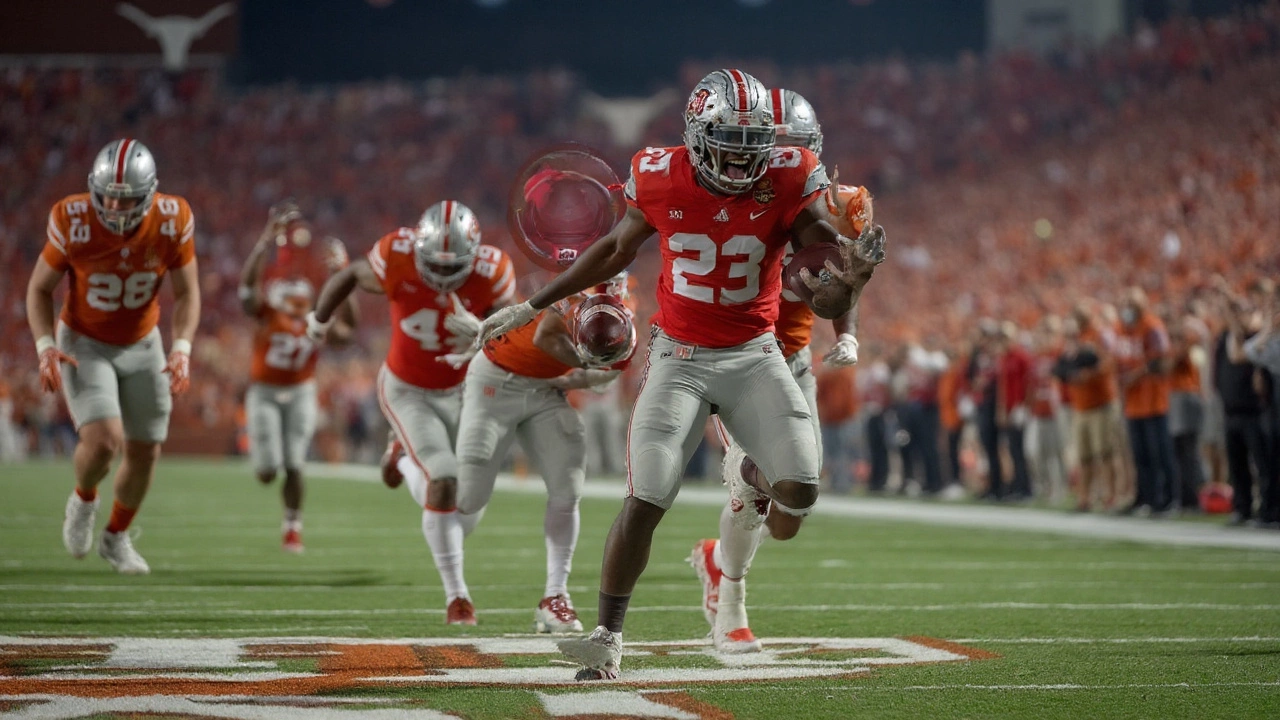Texas and Notre Dame have room to move — and little margin for error
The 12-team era changed the math. A single stumble in November no longer ends a season, but rivalry wins still move the needle. With Texas at No. 7 and Notre Dame at No. 8 in the AP Top 25, both sit in prime position. The question isn’t whether they’re good enough; it’s how clean their resumes look when the committee meets.
Here’s the setup. The College Football Playoff now takes the five highest-ranked conference champions and seven at-large teams. The four highest-ranked conference champions earn first-round byes and host no games; everyone else plays in the opening round on campus sites. Notre Dame, as an independent, cannot claim a first-round bye even if it ranks in the top four. That makes seeding and strength of schedule crucial for the Irish. For Texas, now in the SEC, a league title is a golden ticket to a bye. Fall short, and a strong at-large case can still get them in comfortably.
Committee criteria haven’t changed: strength of schedule, head-to-head, common opponents, conference titles, and how you look late. AP and coaches’ polls set the conversation, but the committee’s own rankings—released weekly in the back half of the season—decide the bracket. That’s where November wins against brand-name opponents separate contenders from passengers.

The games that swing the bracket
Texas’ path is straightforward but steep. Win the SEC, and you’re likely resting on the opening weekend. The Red River game in October remains a pressure test. Stack that with road grinders in league play and a nonconference slate built to be judged, and the margin is slim. A 10–2 Texas with a couple of top-15 wins probably sits safely in the field as an at-large. A messy 9–3 with a bad loss invites sweat on Selection Sunday.
Notre Dame lives on the edge of independence. The Irish can’t lean on a conference title, so the resume has to sing. The annual dates—USC, Stanford, Navy—carry tradition, but the committee cares about present-day quality. That’s why the trip to Texas A&M on Sept. 13, 2025, looms large. Beat a physical SEC opponent on the road, and you bank a statement win that holds value all year. Lose, and the rest of the slate has to make up the difference.
How many losses can each afford? In this format, a disciplined 10–2 record with quality wins ages well. Texas benefits from the SEC’s depth; even a second-place finish can yield a top-eight seed. Notre Dame likely needs 10 wins to avoid the bubble—nine wins with one or two top-10 scalps might still work, but it invites comparisons they can’t control.
What matters most over the next two months:
- Quality road wins: The committee rewards teams that win away from home, especially in hostile venues.
- Rivalry results: Red River for Texas and the late-season USC game for Notre Dame will shape perception and seeding.
- No bad losses: A stumble against an unranked team weighs more than a close road loss to a top-10.
- Health and trajectory: Teams that finish strong often get the nod in tight comparisons.
There’s also seeding strategy. For Texas, a top-four finish as an SEC champion means a bye and a cleaner path to the quarterfinals. For Notre Dame, the target is a top-eight seed to host a first-round game in South Bend—valuable in December weather. Fall outside the top eight, and you’re traveling on short notice to someone else’s stadium.
One more wrinkle: AP rankings are an early snapshot. The committee’s first release comes later in the fall and can diverge sharply. That’s when schedule strength and head-to-head wins jump to the front. Texas will want its marquee wins clustered late. Notre Dame needs no-doubt performances—double-digit margins against solid opponents and mistake-free fourth quarters in toss-up games.
The stakes are clear. For Texas, survive the SEC meat grinder and either collect the title or stack enough ranked wins to coast into the bracket. For Notre Dame, build a resume with two or three headline victories and keep the floor high everywhere else. The Sept. 13 visit to Texas A&M will say a lot about the Irish’s ceiling. Texas, as usual, will be judged by how it handles October and whether it closes like a top-four seed.
